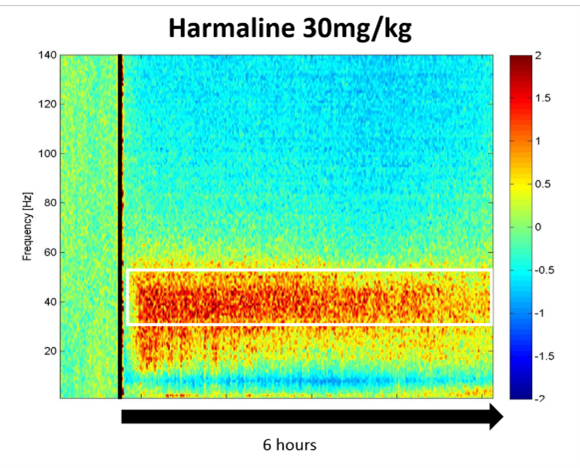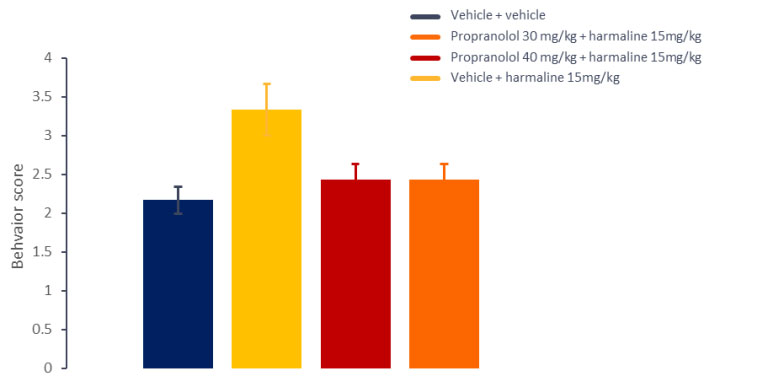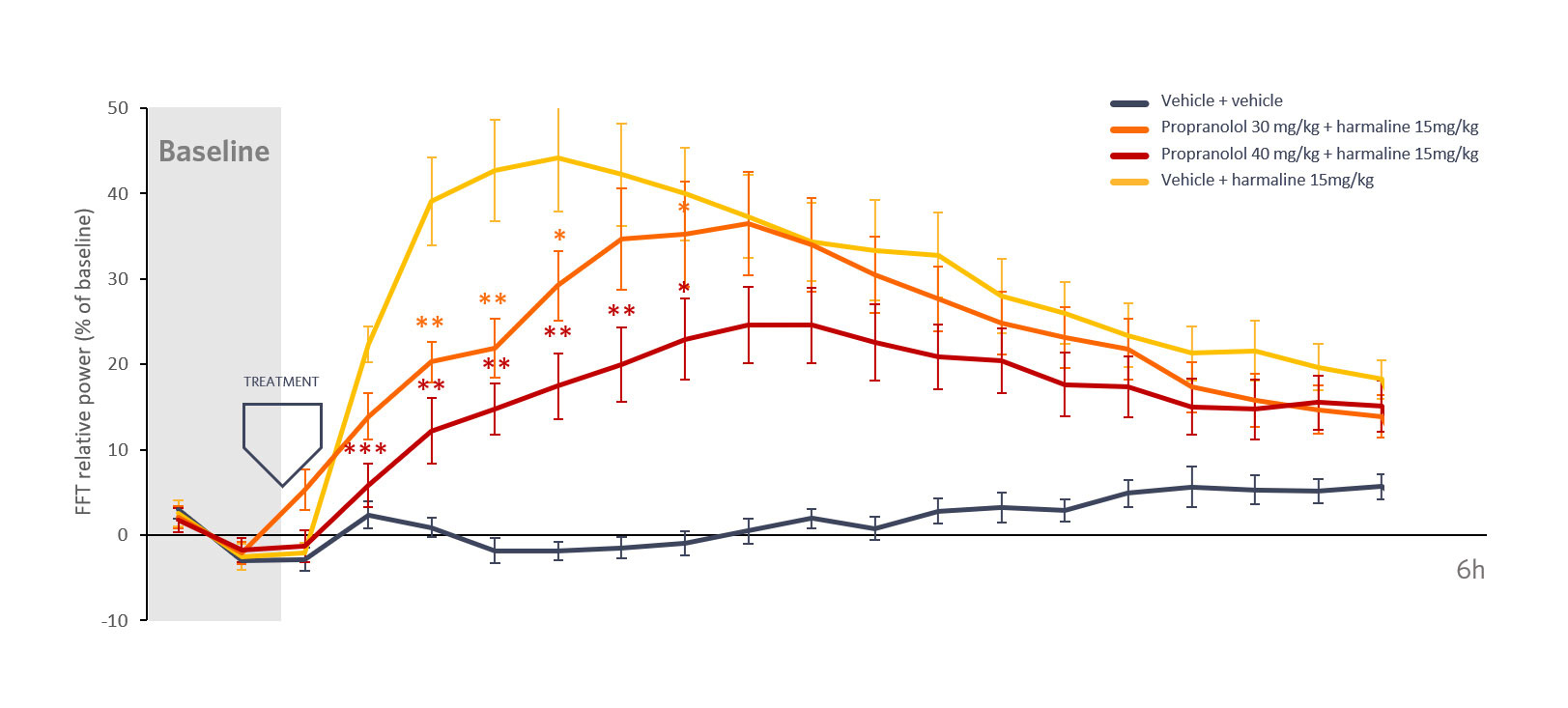ESSENTIAL TREMOR
Home » Solutions / Drug Efficacy Testing / Movement Disorders / Essential Tremor
A Common, Yet Difficult to Treat, Disorder
Essential tremor (ET) is the most common neurological disorder affecting postural or action tremors. It has an overall prevalence rate of 1.33%, rising to 4.6% among those aged 65 years and above.
Present medical treatments, such as propranolol, can reduce tremor amplitude by up to 50% but are only effective in approximately 40% of patients. Additionally, some potentially effective pharmacological agents have been associated with intolerable adverse effects. Fortunately, a range of drug candidates with diverse mechanisms of action are undergoing clinical testing at various stages. These include T-type calcium channel blockers, GABA-A receptor positive allosteric modulators.
There is a critical need to enhance outcome measures by establishing standardized methods to assess tremor severity, thereby facilitating the evaluation of treatment efficacy.

SynapCell's EEG Biomarker: Beyond Tremors
Harmaline is a pharmacological model of essential tremor that involves the administration of the β-carboline alkaloid harmaline. Harmaline-induced tremor is as a well-established model that can be used to facilitate and accelerate the preclinical screening of potential ET therapies.
The combination of this model with a relevant EEG biomarker represents a robust tool to empower decision-making processes. This assay provides a meaningful complement to behavioral studies, by evaluating the impact of treatments on the ET biomarker within the cerebellum and motor cortex.
At SynapCell, we propose both rat and mouse harmaline-induced tremor models.

A Translational Model for the Disease
- Harmaline-induced tremor is characterized as an action tremor, akin to ET, with the frequency of tremor varying slightly between species (10–16 Hz in mice, 8–12 Hz in rats).
- Like ET, harmaline-induced tremor involves the cerebello-thalamo-cortical network.
- Classic medications for ET suppress harmaline tremor.

Objective EEG Biomarker
The ET band helps quantify the intensity of the effect of a compound in real time while remaining objective. These data complement those of behavioral studies, by informing on the efficacy of the compound beyond clinical symptoms.

Pharmacological Profile Similar to Human Essential Tremor
Most drugs proven to mitigate harmaline-induced tremor in animal models also exhibit therapeutic benefits in patients with ET.
Propranolol, carbamazepine and ethanol have demonstrated efficacy in both humans and animals with ET, validating it as a predictive model.
Key Features of the Harmaline Model
The Harmaline model and essential tremor (ET) involve the same brain structures, with tremors occurring within a similar frequency range as observed in ET patients.
The ET band induced by Harmaline is reversed by known therapeutic agents such as propranolol, ethanol, and carbamazepine, demonstrating its predictive reliability when assessing potential treatments for ET.
Drug Discovery Assays with the Harmaline Model
Evaluate how biological systems react to varying drug concentrations. The resulting dose-response curve provides vital information on drug potency, efficacy, therapeutic range, and safety, guiding crucial decisions in drug development.
Study how drugs interact with and affect the body, and examine the biological and physiological effects of drugs, their mechanisms of action, and the relationship between drug concentration and therapeutic response.
Develop additional treatments to enhance the efficacy of existing drugs. These therapies are designed to be used in combination with the main treatments, targeting different aspects of a disease or addressing the limitations of the main treatment to improve overall condition.
Several antiseizure medications such as primidone and carbamazepine have demonstrated efficacy against Essential Tremor.
DOWNLOAD
POSTER
POSTER
Translational Pharmacology in Essential Tremor: Relevance of Electrophysiological Biomarkers
In this study, we see that the harmaline-induced Essential Tremor model provides a suitable sensitive asset for assessing the pharmacodynamics of Essential Tremor treatments and is predictive of their efficacy. The combination of EEG and this model provide a decision-enabling screening platform for the identification of novel compounds.

Powered by Cue®, SynapCell's Predictive In Vivo EEG Platform
SynapCell’s Harmaline mouse and rat models and their associated EEG biomarker (ET band) are processed on Cue®, our innovative translational in vivo EEG platform, which is designed to predict the in-human efficacy of your drug candidates during the preclinical step. Cue® is the result of decades of R&D, combining SynapCell’s know-how, expertise and scientific excellence in the fields of brain surgery and EEG signal recording, processing, and analysis.
Using Cue®, we transform preclinical data into actionable insights, offering end-to-end support for informed decision-making in CNS drug discovery.
THE SCIENCE CORNER
A Pharmaco-induced Model
Acute administration of Harmaline at 15mg/kg leads to stable and increased oscillatory activites in the 30-55Hz frequency band, or ET band, in the primary motor cortex and the cerebellum. The effect persists for several hours. The Harmaline model is rapid, stable and highly reproducible.
ET Band, SynapCell's EEG Biomarker for the Harmaline Model
The ET Band and harmaline mouse model reveal the dose-response effect of drugs such as propranolol. Here, propranolol dose-dependently reduced the harmaline-induced EEG biomarker in rats.
Despite the lack of observed effect of propranolol on motor components, a pharmacological impact may be revealed by the ET frequency band.
Both motor and cortical activity endpoints provide valuable data, enabling drug developers to comprehensively evaluate the effects of their compound on both tremor severity and underlying neural activity.
References: https://www.mdpi.com/2218-273X/11/12/1813
Let's Talk About Your Research Project!
More than a CRO, a team of collaborators – we are your dream neuroscience team specialized in preclinical EEG! We don’t just produce data, we are your partners from conceptualization to conclusion. We translate raw EEG data into meaningful, clinically-relevant endpoints, delivering clear insights to allow data-based decision-making. Choose SynapCell, a leading preclinical CNS-specialized CRO for cutting-edge EEG expertise combined with an irresistible touch of fun.
News & Events
PRESS RELEASE
SynapCell and the University of Utah Celebrate the 10-year Anniversary of their Collaboration on Anti-Seizure Medications.
NEW!
AMYGDALA KINDLING MODEL
Choose our Amygdala Kindling model to test compounds targeting focal-to-bilateral tonic-clonic seizures. Choosing the right model for the appropriate type of epilepsy seizures is key to the effective discovery of ASMs.
NEW!
SLEEP & VIGILANCE STATES
Discover SynapCell’s new preclinical EEG capabilities for sleep and vigilance states, and gain additional insights to characterize compound effects.




